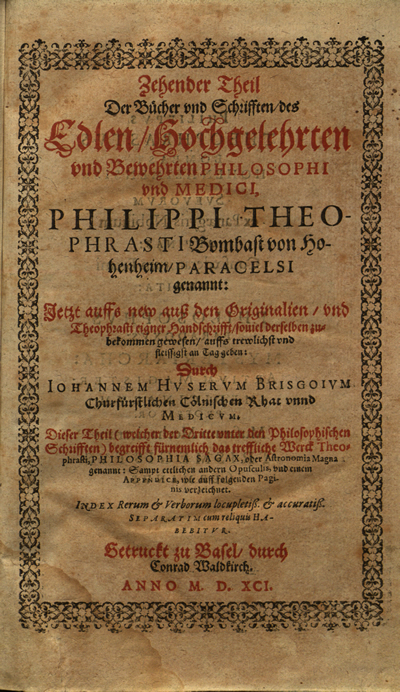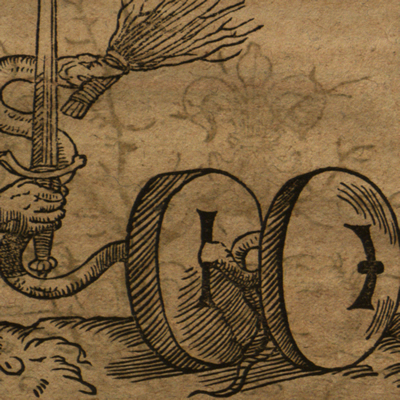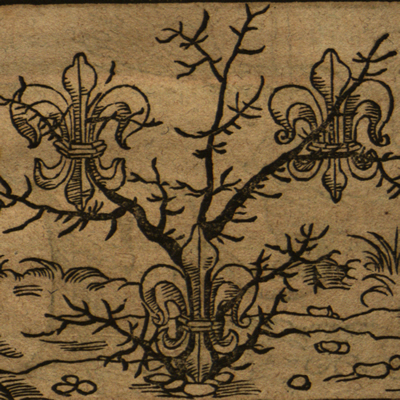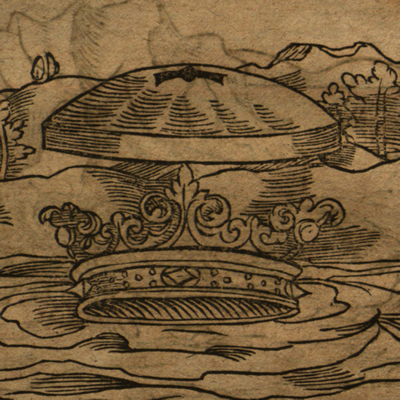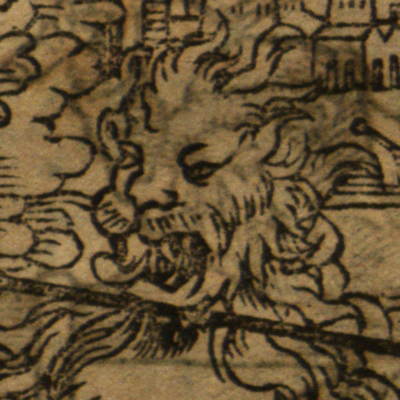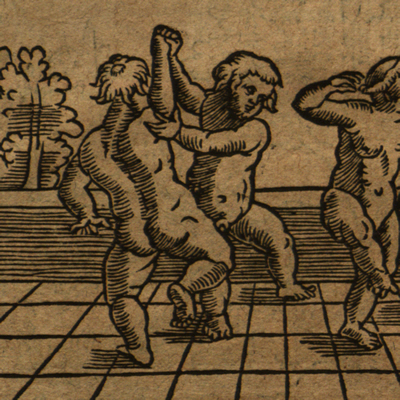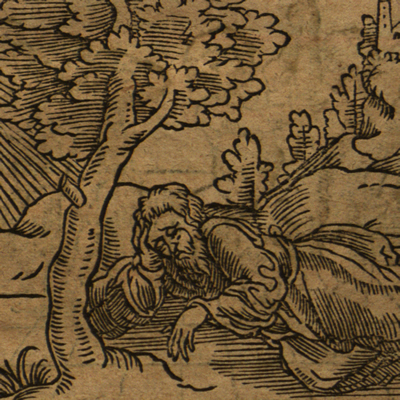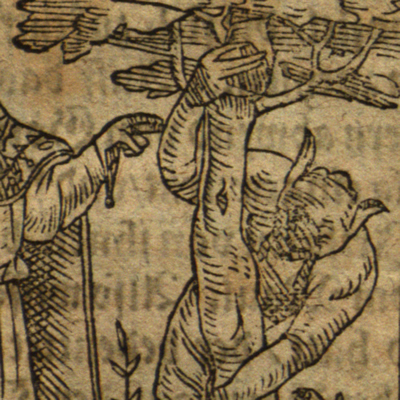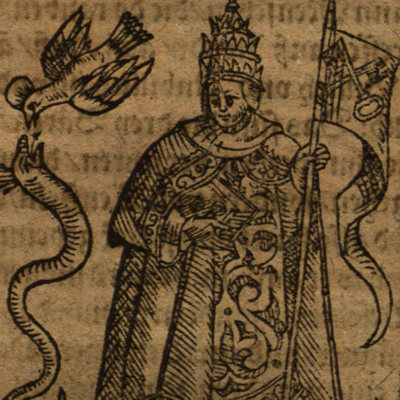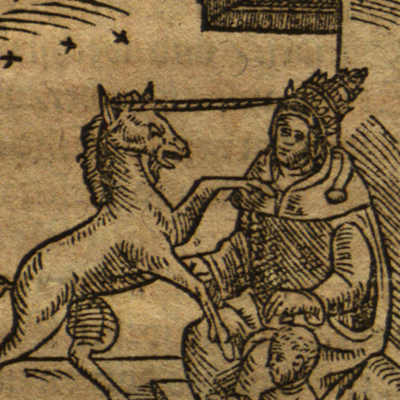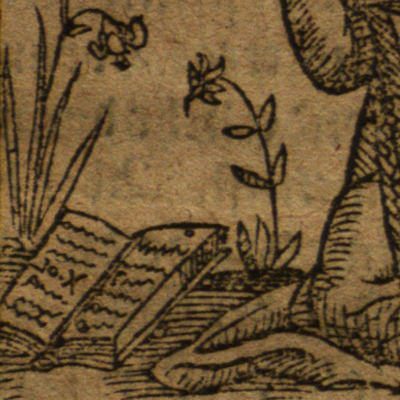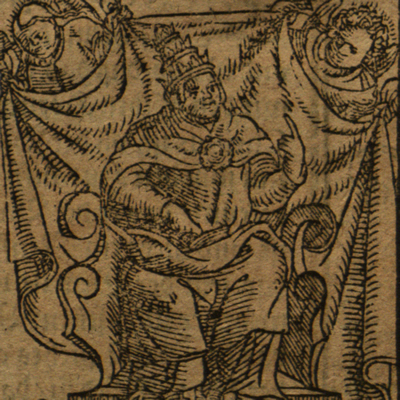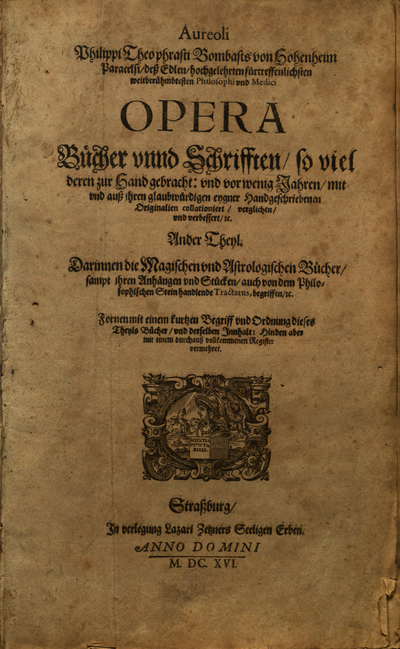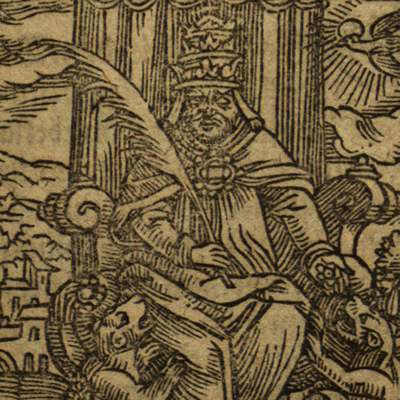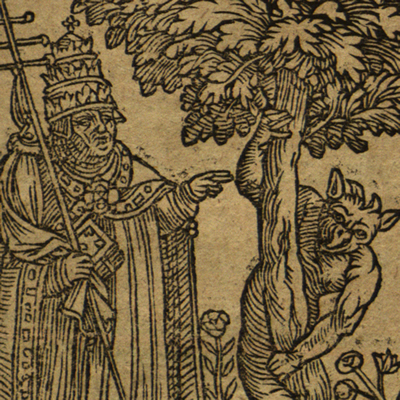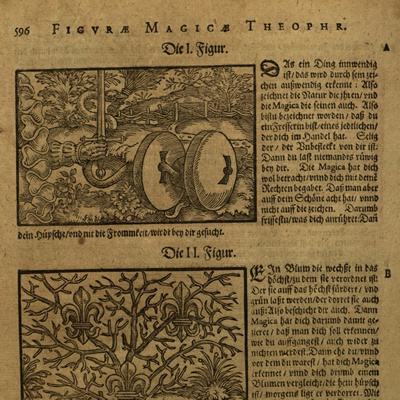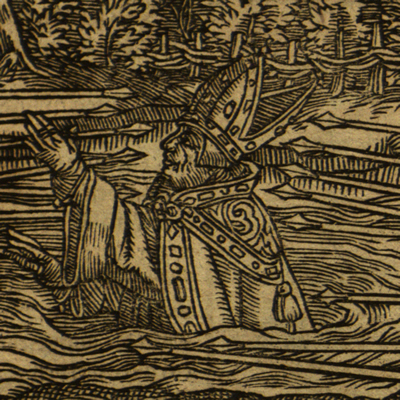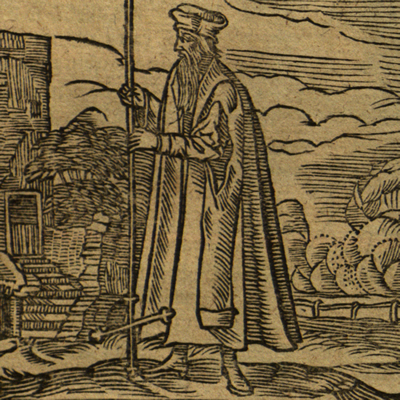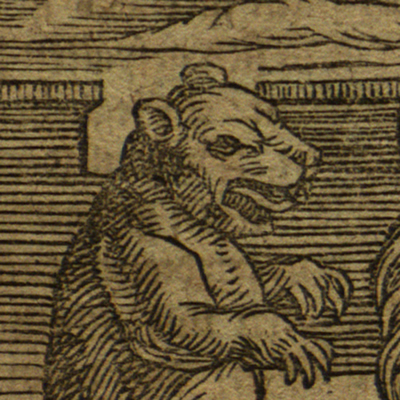Johannes Huser, Editor of Paracelsus
After Paracelsus’ death, his works were edited and published by other physicians who found merit in his ideas. One of the most significant of these editions of Paracelsus was the physician Johannes Huser’s ten-volume compilation of Paracelsus’ works on medicine and natural philosophy, which was published from 1589-91 in Basel by Conrad Waldkirch. The prophetic works appear in Volume 10 of this compilation.
In addition to the Prophecy for the Next Twenty-Four Years, Huser’s edition includes Paracelsus’ interpretation of the “pope prophecy,” one of the late medieval and early modern period’s most well-known prophecies. It consisted of thirty images depicting a series of corrupt popes followed by a series of righteous “angelic” popes. Often referred to as the Vaticinia de summis pontibus, it consisted of two different prophetic manuscripts that were conflated at some point in the early 15th century. Although the original authors remain obscure, by the early modern period the combined prophecy was commonly (although erroneously) attributed to Joachim of Fiore, a 12th century Italian monk who preached that the history of the world was divided into the Age of the Father, the Age of the Son, and the Age of the Holy Spirit. This final age would be a time of great spirituality overseen by a new monastic order.
The earlier manuscript, known as the Genus nequam, consisted of a series of fifteen figures with accompanying text and was written sometime in the late 13th or early 14th century. It was based on an older Byzantine prophecy known as the Leo Oracles, which depicted the downfall of a ruling dynasty and the arrival of a savior-Emperor. Its medieval reinterpretation was originally meant to depict a series of cardinals from the powerful Orsini family, but it quickly became associated with the papacy. The first seven figures depicted in the manuscript represent the historical popes from Nicholas III to Benedict XI. They are followed by eight future popes who were meant to usher in a revival of both the church and society.
The second prophetic manuscript, called the Ascende calve, appeared in c.1328. Like the Genus nequam, it depicted a series of historical popes beginning with Nicholas III, but ended with a depiction of a terrible beast, possibly representing the beast of the apocalypse. When the two prophecies merged, the Ascende calve came before the Genus nequam, with the beast appearing in the middle of two sequences of popes. While these prophecies were originally written in the context of a renewal of the Catholic Church, its combination of papal and apocalyptic imagery proved irresistible to the 16th century religious reformers eager to comment on the failings of the papacy. When the Lutheran theologian Andreas Osiander found copies of the prophecy in the library of the Carthusian monastery in Nuremberg and the Nuremberg City Council library, he excised the original text and wrote his own preface and interpretation of the images, which were created anew by the artist Erhard Schön. The Nuremberg meistersinger Hans Sachs also collaborated on the project, and provided couplets to accompany each image. This new edition of the prophecy was published in 1527 as Eyn wunderliche Weyassgung von dem Babstum (A wondrous prophecy of the papacy) as a visually arresting example of Lutheran propaganda, made explicit by their depiction of Martin Luther preparing to revitalize Christianity.
The images also appealed strongly to Paracelsus. Paracelsus did not care for Osiander’s interpretation, as he not only thought it was biased (which it was), but believed Osiander lacked any real prophetic insight. Paracelsus wrote his own commentary on the papal figures in 1530, although they were not published until 1569. Although Paracelsus interpreted the figures as showing the complete corruption of the papacy and its inadequacy to lead the Christian flock, he did not cast Luther as a savior figure. Paracelsus instead opted for an interpretation that included the traditional pastor anglicus. A new pope would be selected by God and crowned by the angels; however, he would understand that he was still only a man, and that the only true pope was none other than Christ.
Both the Prophecy for the Next Twenty-Four Years and the papal prophecy also appear in a later edition of the Huser compilation published in 1616 in Strasburg by the “heirs of Lazarus Zetzner.” The woodcuts used in this edition have much more detail than the ones used in both the Egenolff compilation and the earlier Huser edition, especially in the backgrounds.
